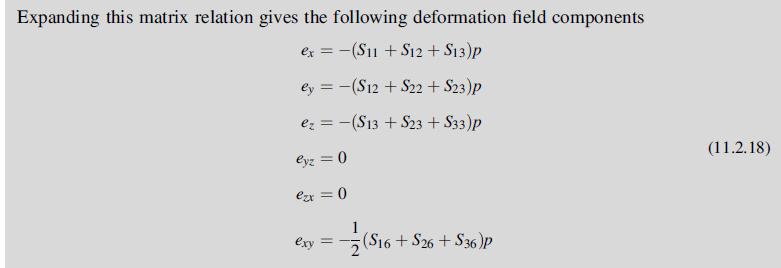Similar to Example 11.1, consider the hydrostatic compression of a material with cubic symmetry. Determine the general
Question:
Similar to Example 11.1, consider the hydrostatic compression of a material with cubic symmetry. Determine the general expressions for the strains. We now specify that the material is aluminum with material properties C11 = 108, C12 = 61, C44 = 28 GPa. If the dilatation was found to be –2 ×10–5, determine the hydrostatic stress.
Data from example 11.1
In order to demonstrate the difference in behavior between isotropic and anisotropic materials, consider a simple example of a cube of monoclinic material under hydrostatic compression. For this case, the state of stress is given by σij =–pδij, and the monoclinic Hooke’s law in compliance form would read as follows:


The corresponding strains for the isotropic case would be given by ex = ey = ez =–[(1–2v)/E]p, eyz = ezx = exy = 0. Thus, the response of the monoclinic material is considerably different from isotropic behavior and yields a nonzero shear strain even under uniform hydrostatic stress. Additional examples using simple shear and/or bending deformations can also be used to demonstrate the complexity of anisotropic stressestrain behavior (see Sendeckyj, 1975). It should be apparent that laboratory testing methods attempting to characterize anisotropic materials would have to be more involved than those used for isotropic solids.
Step by Step Answer:

Elasticity Theory Applications And Numerics
ISBN: 9780128159873
4th Edition
Authors: Martin H. Sadd Ph.D.





